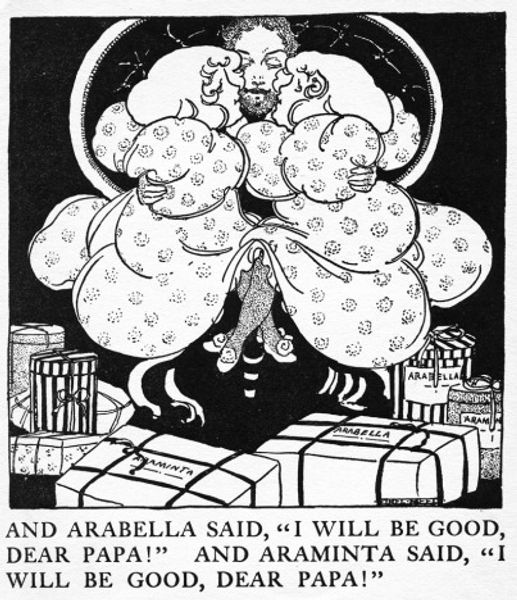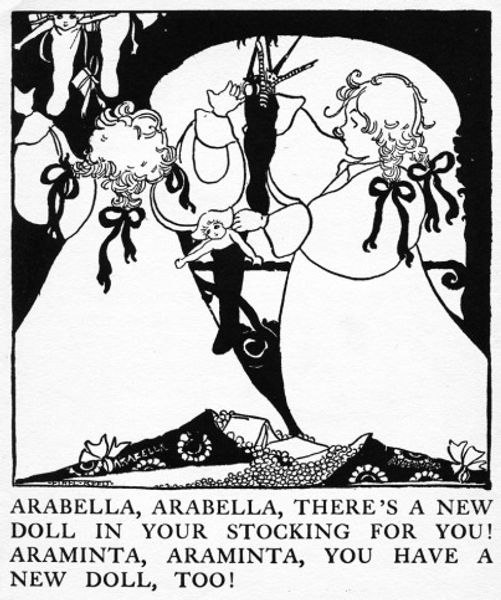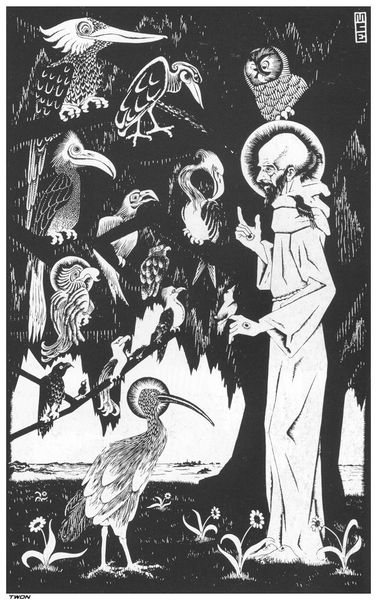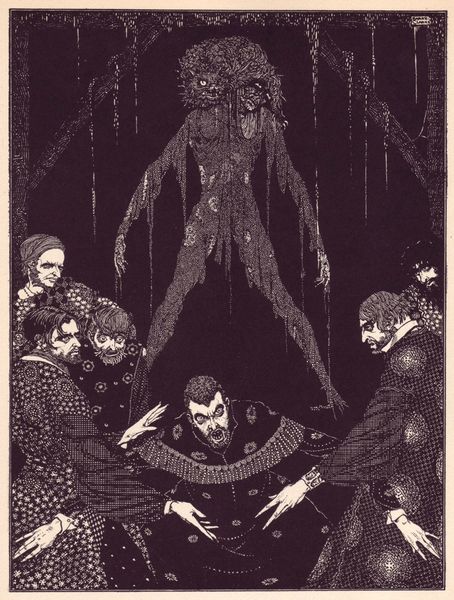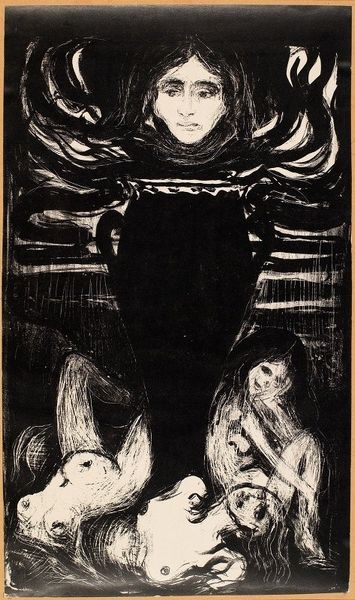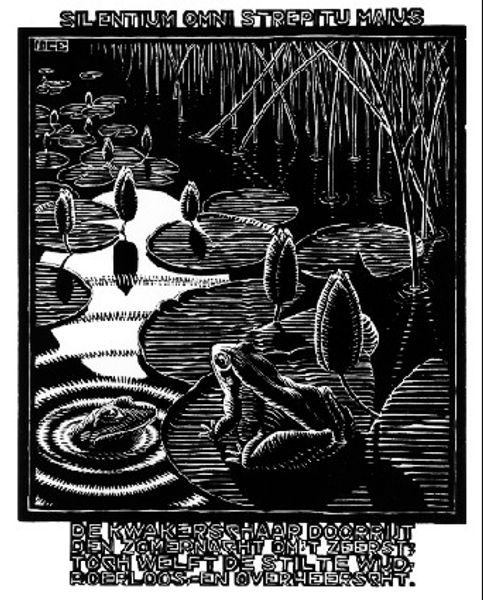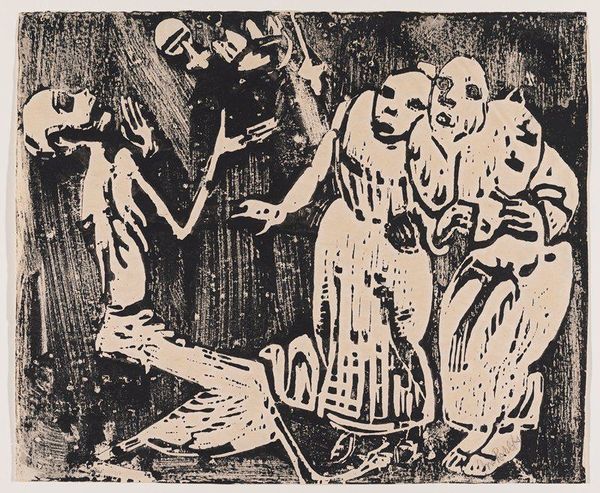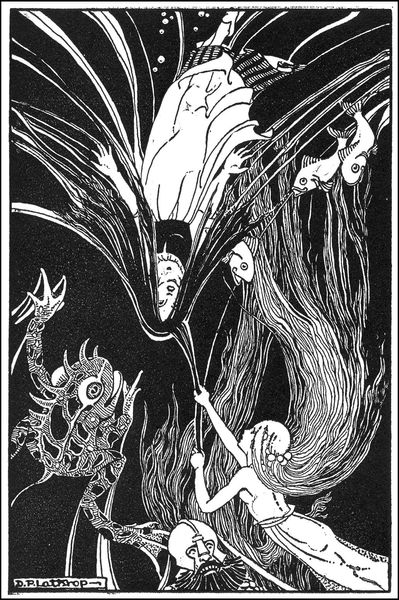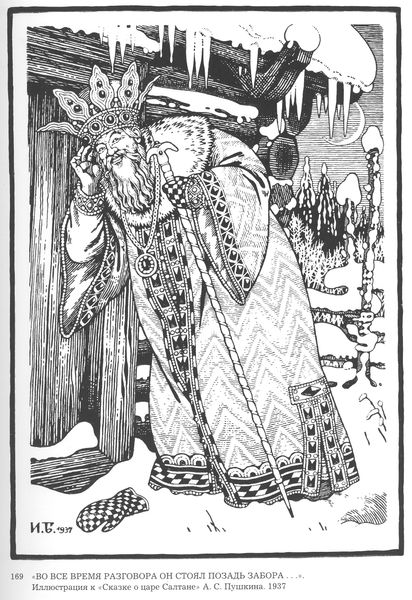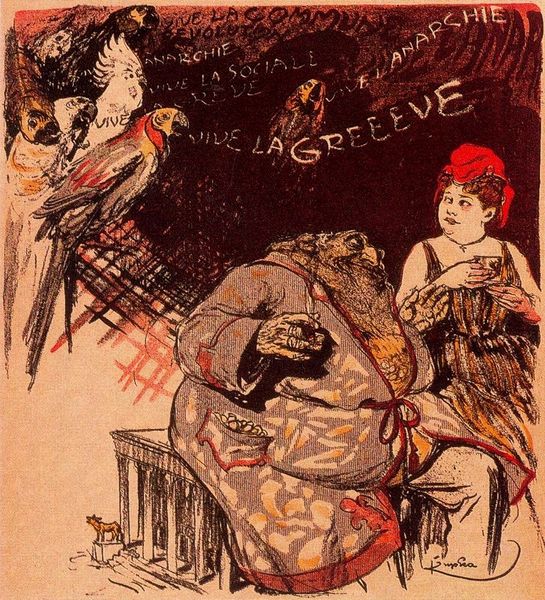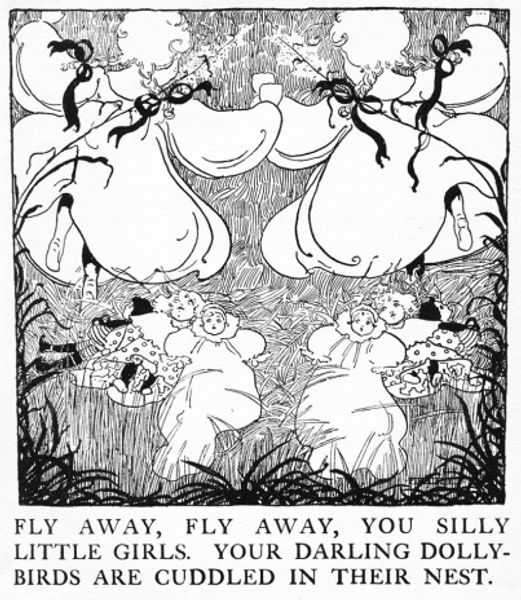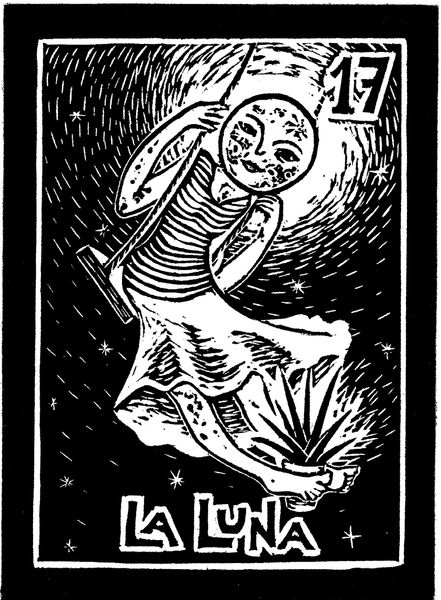
drawing, paper, ink
#
drawing
#
narrative-art
#
arts-&-crafts-movement
#
figuration
#
paper
#
ink line art
#
ink
#
comic
#
line
#
symbolism
#
comic art
Copyright: Public domain
Curator: This is an ink drawing on paper, an illustration by Ethel Reed dating back to 1895, part of her Arabella and Araminta Stories. What's your immediate take on it? Editor: Striking! The high contrast between the blacks and whites is what grabs you first, giving it an almost unsettling, dreamlike quality. All those sharp lines and intense, inky shadows. Curator: The illustration clearly aligns with the aesthetic tendencies of the Arts and Crafts Movement, a counter-movement against industrial manufacturing and mass production that emerged in England in the late nineteenth century. Notice how this aesthetic emphasizes artisanal craftsmanship through its design and production method, giving an idealized view of pre-industrial society and workmanship. Editor: Right, and the text incorporated directly into the illustration. I wonder, considering the narrative here – an appeal to be spared, of not becoming an animal cracker – if Reed is making a comment, through her labor, on the relentless cycle of consumption, on becoming literally devoured by consumer culture? The means of illustration here – the use of pen and paper to produce multiples in books, for example – certainly places this in a world of manufactured commodities. Curator: Certainly the rise of illustration as a commercially viable art form played a significant role here. The commodification of childhood innocence, for instance, was rampant during this period and deeply impacted book design, as we can see here. This scene speaks to social anxieties around childhood in Britain at the time, with those girls in positions of immense power. I believe Reed is subverting Victorian societal constraints through symbolism to liberate those girls in her compositions. Editor: That’s true, the power dynamic is inescapable! These little Victorian girls seem poised between innocence and potential tyranny, underscored by that unsettling darkness. It's more than a simple narrative. Reed shows how children too exist within systems of production and labor. Curator: The work surely asks many questions that continue to invite us to think and rethink through their own means of making. Editor: Absolutely! Reed’s illustrations give voice to what the eye has not seen—a great moment in artistic production and process.
Comments
No comments
Be the first to comment and join the conversation on the ultimate creative platform.
